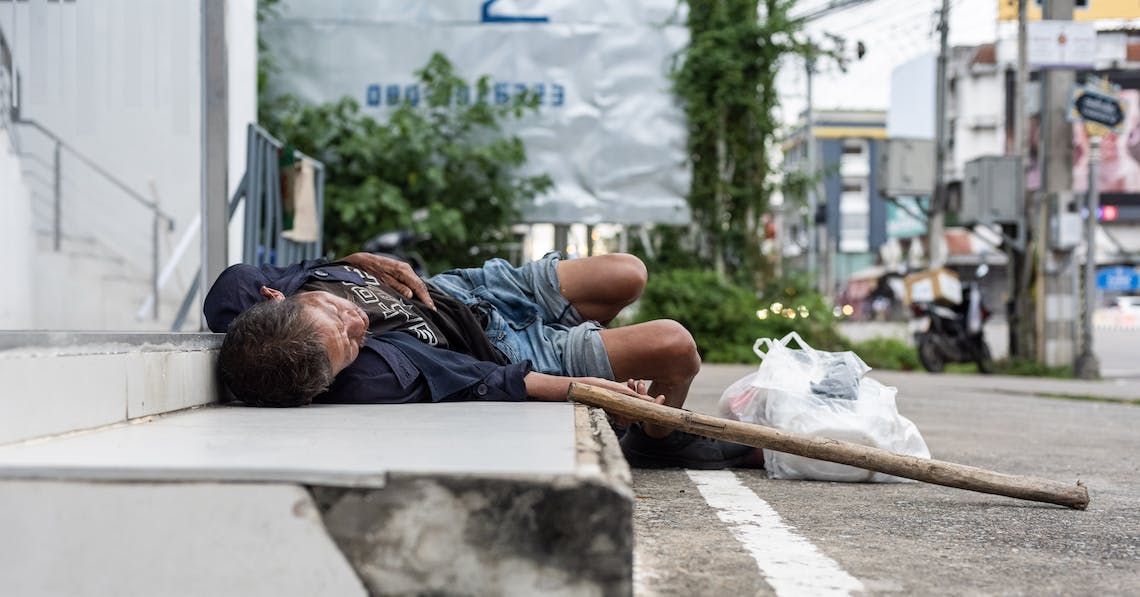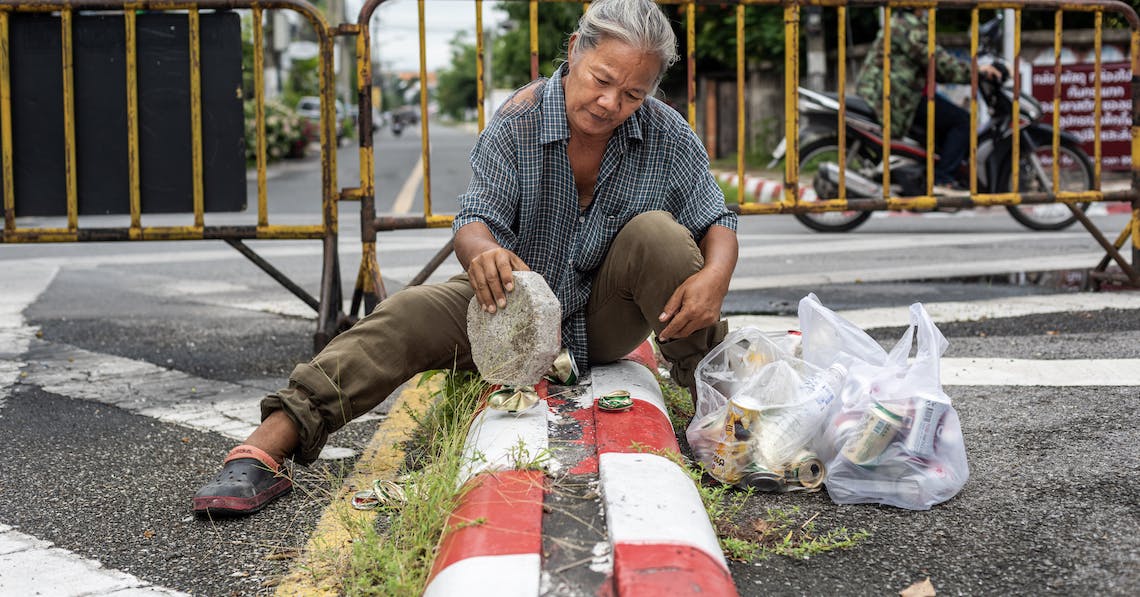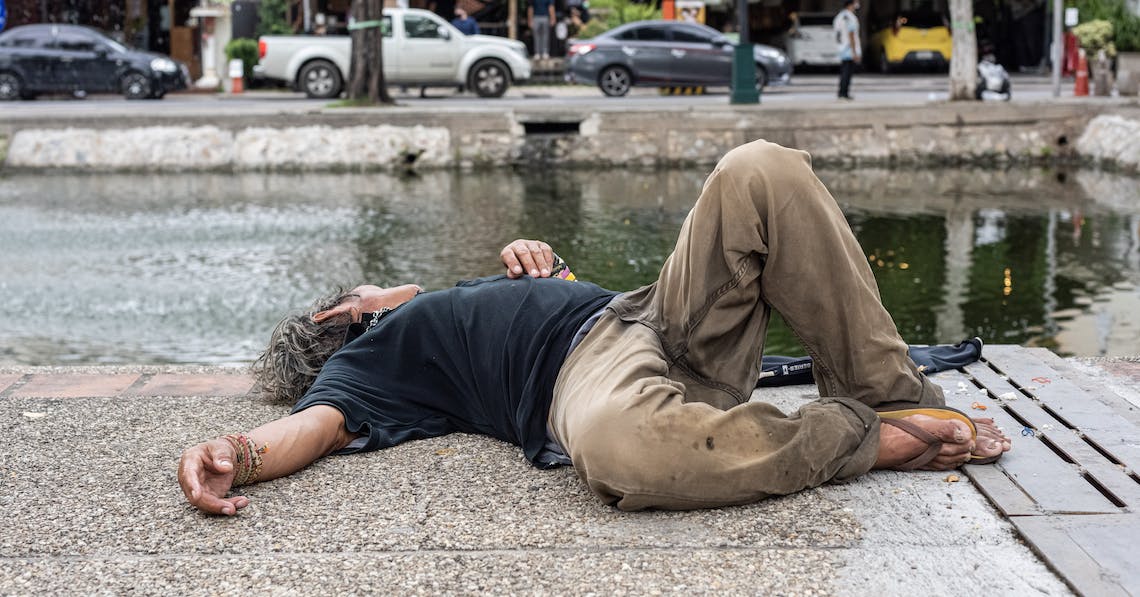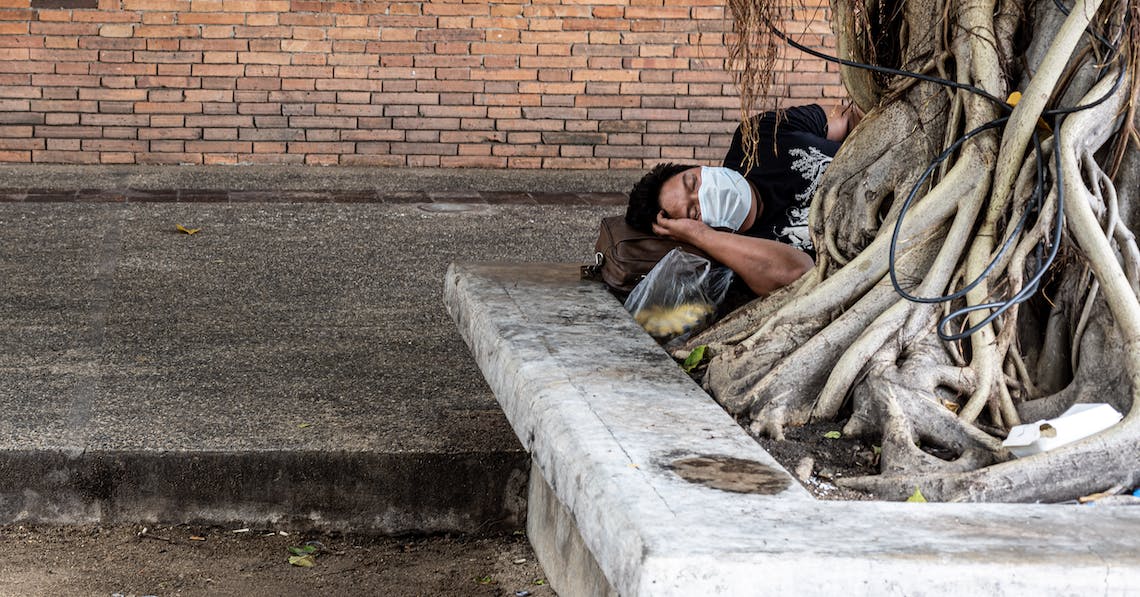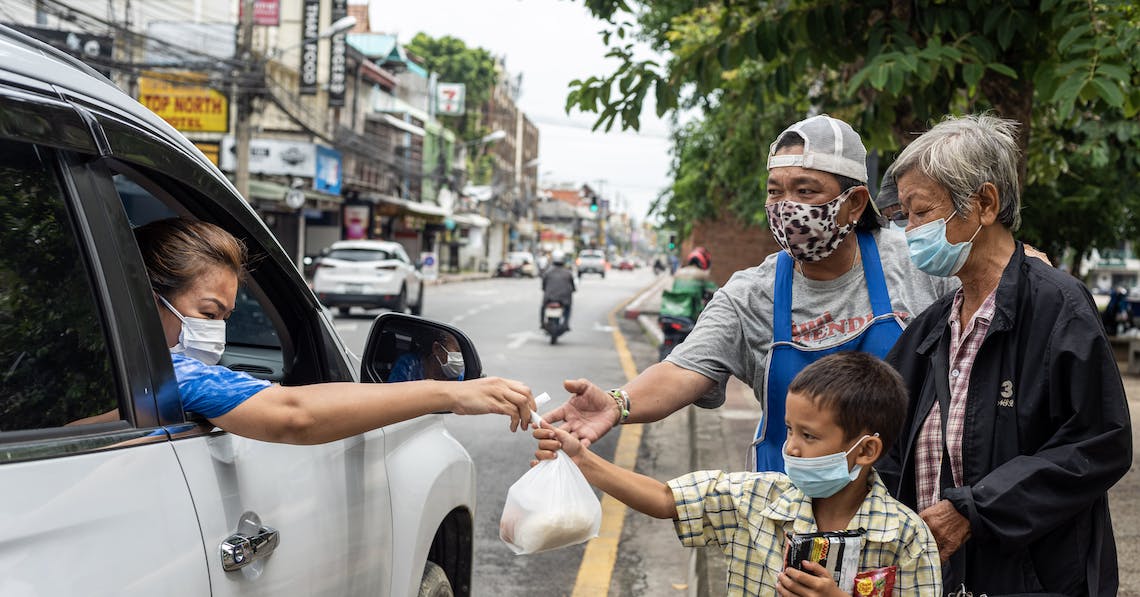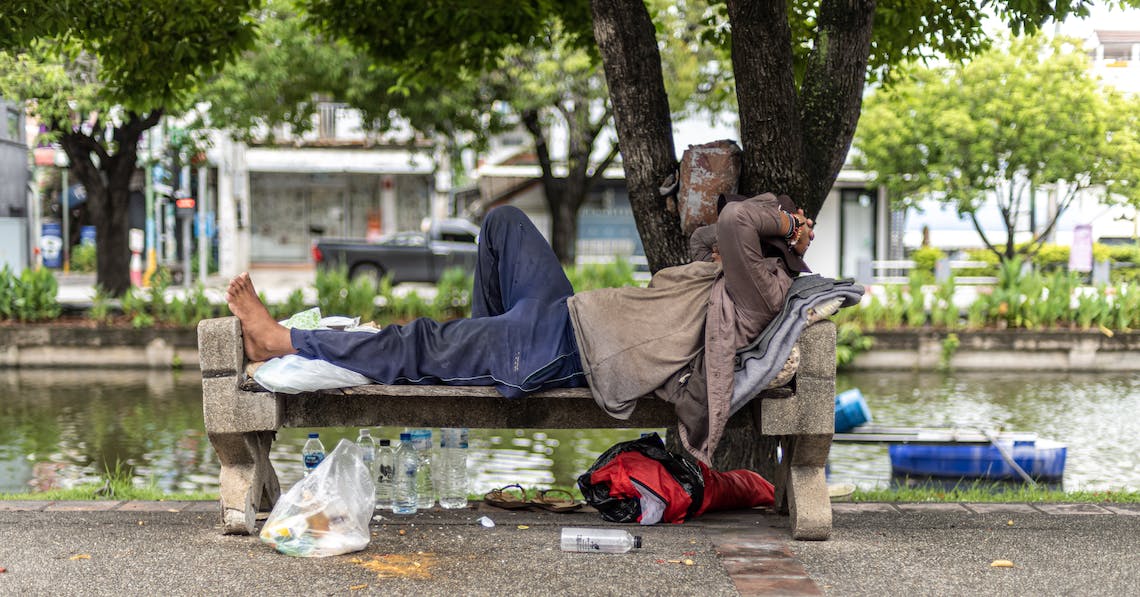Downtown Chiang Mai, Thailand is famously known for its rustic walls, numerous temples and ancient ambiance. These attractions create a picturesque city atmosphere that welcomes millions of tourists each year. In 2019 Chiang Mai met with over 10.8 million visitors that came to experience the incredible culture that the Old City has to offer. However, COVID has taken its toll. Travel has slowed to a snail’s crawl and the city that once featured bustling streetlife now stands virtually empty. The droves of tourists that once populated the streets have now been replaced by a very different group of people; the homeless community.
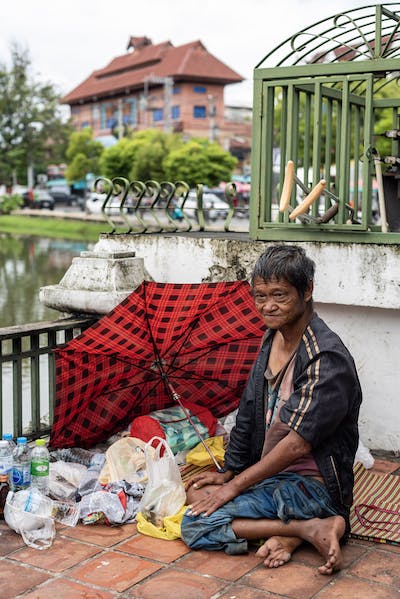
“I got kicked out of the last place I stayed because of security,” said 62 year old Pu. Pu is homeless and sleeps on a small mat in an alcove next to the mote at Chiang Mai Gate. Surrounded by garbage, half eaten food and soiled garments he shared his story with Citylife, “I was born in Chachoengsao but I live in Chiang Mai. My mom owned a business here. I’ve been homeless for six years but I have been living in this spot for one year. I don’t have a house in Chiang Mai and I cannot live in a shelter because they are all full right now. I am lonely. Normally no one ever talks to me but sometimes they come to the local market and give me food.” As flies hummed around his body he continued, “I was a gold shop security officer in the past. I have lots of pain in my legs and that is why I don’t work. I don’t have any family. No children or wife.” He explained that COVID was of little concern to him and that he couldn’t care less about vaccines. His issues were more immediate. “The only problem I have out here is the rain,” he pointed at a red umbrella laying next to him, “I want a big sheet of plastic to cover me from the rain instead of this.”
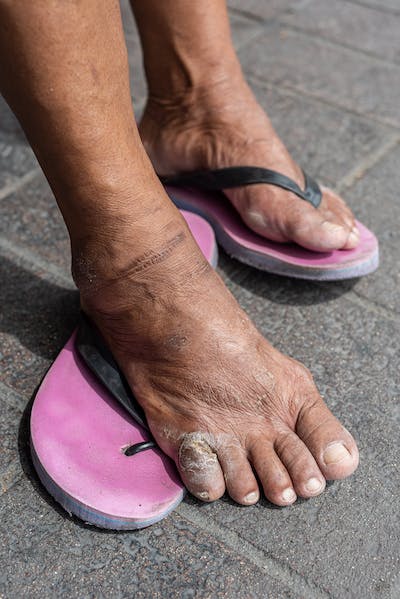
With a record number of daily COVID cases in Thailand, well over 10,000, the economic effects are being felt and seen throughout the small northern city. The waves of COVID infections seem to blur together at this point. On all four sides of the city, signs of impoverishment can be seen on a daily basis. Common sights include: People collecting aluminum cans from trash bins, panhandlers asking for extra cash and people sleeping on benches and sidewalks.
On the eastern side of the Old City, larger groups of homeless citizens gather. Chiang Mai’s instagrammable Tha Pae Gate invites dozens of less fortunate locals to its openair atmosphere; many of which panhandle to the few tourists that do walk the city. One 70 year old panhandler going by the name of Lorly explained how COVID was directly affecting her life, “Fang District is my hometown. It’s 2 hours and 30 minutes from Chiang Mai and it’s a Red Zone right now so I cannot get back to my hometown.” The government recently restricted certain travel routes across the nation, “I’m just waiting here for Fang to let me come back to my home. I have no money.” Lorly sleeps on a bench in front of the recently closed ‘John’s Place’ restaurant – prepandemic, a foreigner favourite dining spot. “I’ve stayed at John’s Place for 1 ½ months now. Normally I work at a dormitory but I lost my job because no one is staying there now. The owner of John’s Place lets me sleep here but the others that stay here are not allowed. I have permission to stay here. The owner gives me money sometimes.” She went on to say that she made a little bit of money by showing passersby her swollen feet to encourage them to give her some cash. Her technique worked on me.
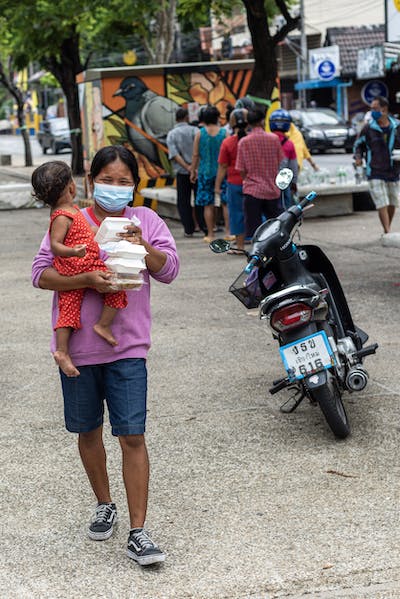
Wealthier Chiang Mai residents are also contributing in a big way. In what can only be described as drive-by donations, affluent community members cruise the moat in search of needier inhabitants in need of sustenance. They then roll their windows down and hand out prepackaged meals to those in nutritious need. Ann (Nattawat Nimsuwan), is one of those drive-by donors, “Sometimes I buy rice, instant noodles and canned fish and give it away. I do it because I can help.” Ann and her kids were driving near Tha Pae Gate in their SUV handing bags of food to the less fortunate. She explained, “I live in town and I own two guest houses. My guest houses have closed down since the virus started. COVID has affected my business but lucky for me I have other sources of income. My friends have businesses that are running and they help out as well. There are lots of people that need help so we come every few days.”
Ann began detailing the scene in Chiang Mai, “There are more homeless people now. I noticed the homeless problem since COVID began. I am in the tourist business so I know there is a problem.” She continued to tell me her thoughts on the larger effects of COVID, “This problem is all around the world. We don’t blame anyone. This is the first time that everyone has to handle this kind of problem. This is a very big problem for the world. I don’t blame the government, local government or anyone else. We do what we can do; We help. It’s not the government’s fault or the prime minister’s fault. It’s no one’s fault. I’m trying to teach my kids that it’s no one’s fault and that it just happened to the world and we do what we can do. We stay safe at home and we give away food when we can. It’s very important. It’s a hard life right now for everyone.”

Whether the destitute around Chiang Mai choose to be homeless or don’t have any other options available to them depends on the individual’s thoughts on the subject. Many of those interviewed commented on the lack of government support while many others celebrated their assistance. The visibility of those in need, however, is certain and it is very real. Chiang Mai, like many other cities around the world, is a very different place right now. For how long is anyone’s guess. Community members have started relieving the new landscape by giving what they can and donating to the less fortunate. These acts of giving by the Chiang Mai community highlight the hallmarks of what has always made the Old City so special; love and generosity.
And while COVID continues to affect the city and show us all a different Chiang Mai than we’re used to, the love and generosity of the city will endure. Chiang Mai’s community will continue to support those less fortunate and continue to give back, revealing the true spirit of the city.
Wave after wave.
www.willlangston.com
